

Aotea Station Main Works
Historic Character Delivery Work Plan (Archaeology)
CRL-AOT-RME-LKA-PLN-800035
Revision: 000
Date: 5 March 2020

Historic Character Section Delivery Work Plan (Archaeology)
CRL-AOT-RME-LKA-PLN-800035
This document is uncontrolled when printed. This document should be printed in colour
Revision Status
Approval Status



Sarah Macready
Peter Roan



1. Introduction
The City Rail Link (CRL) project comprises the construction, operation and maintenance of a 3.4 km underground passenger railway, running between Britomart Station and the North Auckland Rail Line in the vicinity of Mt Eden Station. The CRL also involves the construction of two new underground stations at Aotea and Karangahape and the redevelopment of the station at Mt Eden (refer to Figure 1--1). The design and construction of the CRL infrastructure between the Aotea and Mt Eden Stations is being delivered by the Link Alliance.

This Historic Character Delivery Work Plan (Archaeology Section) (HC DWP (Archaeology Section)) has been prepared in relation to the main construction works for the new Aotea Station.
1.1 Aotea Station Overview
Once completed, the Aotea Station will include platforms, lifts, escalators, rooms for housing stations and tunnel services equipment, an entrance building at Wellesley Street, two additional entrance buildings at Victoria Street, a Plenum at Kingston Street, services, internal and architectural finishings, structural fittings, utilities services diversions and connections.
The location of the Aotea Station is primarily beneath Albert Street, connecting the Contract 2 (C2) cut and cover tunnels to the north and the tunnel-boring-machine (TBM) tunnels to the south. The works are approximately 380m long by 18m wide and will be excavated around 18-20m below ground level. Additional boxes branch off from the tunnel alignment at Kingston Street (to form the Plenum), Victoria Street (for two entrance buildings to the Aotea Station) and Wellesley Street (to form the main entrance building to the Aotea Station (refer to Figure 1-2 below)1
1 Auckland Transport (AT) has obtained a resource consent for an Over Station Development (OSD) on the Bledisloe Car Park site (Council Reference R/LUC/2016/2647). The proposal involves the construction of a 24-level building comprising offices, retail and food and beverage tenancies, and public features including a plaza and a through site link. The proposed OSD is not part of the Link Alliance contract and will be progressed separately by Auckland Council / Panuku
Page 5 | Aotea Station Main Works
Figure 1--1: CRL Route and Location


Aotea Station Main Works
Figure 1-2 Indicative Aotea Station indicating length of underground station box with the associated above-ground Main Station structure at Wellesley Street, entrance structures at Victoria Street and the Kingston Street Plenum.

Given the nature and scale of the Aotea Station construction, works will be undertaken in a staged manner, involving:
• Five stages of early works (canopy removal, network utility relocation and site establishment work), being undertaken from October 2019 to March 2020 (Stages 1 to 3) and December 2019 through to August 2020 (Stages 4 and 5); these works have been authorised by separate Outline Plans (Council ref. OPW60345651 and OPW60348747);
• Main construction works (the ‘Aotea main works’) involving construction of the station box, associated above ground structures, mined tunnels for the rail tracks, internal finishings, structural fitout, all Mechanical, Electrical, Fire and Hydraulic (MEFH) installation, and architectural finishings2. The Aotea main works will be undertaken from early-2020 through to late-2023; and
• Ground reinstatements (from late-2022) and urban realm improvements. These works will be described in a future Outline Plan2 .
This HCDWP (Archaeology Section) relates to the main construction activities to form the station box, including d-walling/ piling and excavation/ earthworks.
Refer to Section 2 of the Construction Environmental Management Plan (CEMP) for a detailed description of the Aotea main works.
1.2 DWP Staging
To reflect the staged construction approach for Aotea Station, the HC DWP (Archaeology Section) will be developed in stages.
This HC DWP (Archaeology Section) addresses the Aotea Station main works, which are detailed in the CEMP, and an overview is provided in Section 2 of this HC DWP (Archaeology Section).
HC DWPs will also be prepared for the public realm reinstatement works2
1.3 Purpose of the HC DWP (Archaeology Section)
This HC DWP (Archaeology Section) has been prepared to identify measures that will be implemented to mitigate and manage the potential adverse effects on archaeology during the Aotea main works. The objective of the HC DWP (Archaeology Section), in accordance with CRL designation Condition 42.2, is:
• "To avoid, remedy or mitigate adverse effects on archaeological remains during construction, as far as reasonably practicable."
This HC DWP (Archaeology Section) addresses the requirements of CRL designation Condition 42 and will be implemented throughout the construction period.
This HC DWP (Archaeology Section) is consistent with the archaeological provisions of the Heritage New Zealand Pouhere Taonga Act 2014 and the archaeological Authority granted by Heritage New
2 It is noted the architectural finishing component of works (the exterior look and feel of the Aotea Station) will occur during Phase 5 of the Aotea main works (approx. 2022 – December 2023). These finishings are still being designed and determined. Once designs are completed a separate Outline Plan and suite of DWPs will be prepared, describing the finishings and other permanent above ground public realm reinstatements. That Outline Plan package will address the relevant Urban Design related Designation conditions (condition 47 – 54, including landscaping (condition 55.3(c))).

Zealand Pouhere Taonga authorising modification of archaeological sites within the Aotea main works project area (2017/793 – refer Appendix A).
This HC DWP (Archaeology Section) has been developed to enable consultation with and feedback from the Aotea Community and Business Liaison Group (CLG); and has been reviewed by Independent Peer Reviewer (IPR) prior to submission to Auckland Council. A record of consultation outcomes (CLG and IPR) is included in Appendix C
This HC DWP (Archaeology Section) has been prepared by Clough & Associates Ltd and forms part of the CEMP for the Project.
1.4 Relevant Conditions
Table 1--1 identifies the CRL designation conditions relevant to this HC DWP (Archaeology Section) and where they are addressed in the document.
Table 1--1: Historic Character – Archaeology conditions and where they are addressed in this HC DWP (Archaeology Section)
Condition No.
Condition
42.1 A Historic Character DWP shall be prepared to manage the adverse effects on built heritage and archaeology that may result during construction of the City Rail Link or any part of it.
42.2 The objective of the Archaeology section of the Historic Character DWP is to avoid, remedy or mitigate adverse effects on archaeological remains during construction, as far as reasonably practicable.
Relevant
This document
This document
42.3 To achieve the above objective the following matters shall be included in the Archaeology section of the Historic Character DWP:
(a) Constructor roles and responsibilities, stand-down periods and reporting requirements are to be clearly identified;
(b) How procedures for archaeological investigations and monitoring of preliminary earthworks are to be implemented in areas where there is potential for archaeological remains to be discovered;
Sections 4.1, 6.8, 6.10
Sections 6.1, 6.2, 6.3, 6.4
(c) Procedures for the discovery of, including accidental discovery of archaeological remains including:
(i) The ceasing of all physical construction works in the immediate vicinity of the discovery;
(ii) Practices for dealing with the uncovering of cultural or archaeological remains and the parties to be notified (including, but not limited to, appropriate iwi authorities, the Auckland Council Consents Monitoring officer, the New Zealand Historic Places Trust [now Heritage New Zealand Pouhere Taonga - HNZPT], and the New Zealand Police (if koiwi (human skeletal remains) are discovered);
(iii) Procedures to be undertaken before physical works in the area of discovery can start again, including any iwi protocols, recording of sites and material, recovery of any artefacts, and consultation to be undertaken with iwi, Auckland Council Consent Monitoring officer and Heritage Unit, and with the New Zealand Historic Places Trust [now HNZPT]; and
Sections 6.3, 6.4, 6.5, 6.8
Sections 6.3, 6.4, 6.5, 6.6, 6.8
Sections 6.4, 6.5, 6.6, 6.7, 6.8

Condition No. Condition Relevant section of DWP
(iv) Procedures for recording any archaeological remains or evidence before it is modified or destroyed, including opportunities for the conservation and preservation of artefacts and ecofacts (biological material) that are discovered. Consideration shall be given to the incorporation of in-situ material or artefacts into the design of stations and / or public places associated with the City Rail Link project. Consideration shall also be given to the provision for ‘post-excavation’ assessment analysis and publication of material within 24 months of completion of construction.
(v) Provision for ‘post-excavation’ archiving, assessment and analysis of the archaeological records and materials; publication of results of that work within 24 months of completion of construction assessment analysis and publication of material within 24 months of completion of construction.
(d) Training procedures for all contractors are to be undertaken in advance of construction, regarding the possible presence of cultural or archaeological sites or material, what these sites or material may look like, and the relevant provisions of the Historic Places Act 1993 [now the Heritage New Zealand Pouhere Taonga Act 2014] if any sites or material are discovered;
(e) Cross references to the specific sections in the Communication and Consultation Plan which details how the Auckland Council Heritage Department, the New Zealand Historic Places Trust [now HNZPT], mana whenua (see condition 8) are consulted, and the communication with the general public on the management of the adverse effects relating to archaeology.
1.5 Sustainability
Sections 6.6, 6.7, 6.8, 6.9, 6.10
Sections 6.9, 6.10
Sections 4.2, 5
Section 7
The Link Alliance is seeking an Infrastructure Sustainability Council of Australia (ISCA) Infrastructure Sustainability (IS) Rating. Further details can be found in the CEMP and Sustainability Rating Management Plan. Project sustainability requirements that relate directly to this HC DWP (Archaeology Section) are included in Appendix B. These requirements are imbedded within the DWP to ensure that sustainability is a key focus and ‘the way we do things’.
In some cases the IS requirements and sustainability goals enhance the designation and consent requirements.
1.6 DWP Review and updates
This HC DWP (Archaeology Section) is a live document that will be reviewed at least annually, or as a result of a material change to the project, or to address unforeseen adverse archaeological effects arising from construction, or unresolved complaints. Any material changes to this HC DWP must be approved by Auckland Council prior to any on-site activity reliant upon the change commencing. Refer to the CEMP for further detail on the review and updating process.

2. Aotea Station Main Works
2.1 Overview of Works
The Aotea main works will involve three main phases of work. Each phase of work involves multiple construction activities which will be undertaken throughout the Aotea project site. The phases associated with the Aotea main works involve:
• Foundation works to form the perimeter walls of the station box and underground running tunnels. This involves diaphragm wall construction, roof construction, piling and jet grouting;
• Construction of the Aotea Station platforms, main station structure, concourse, entrance structures and Plenum, and;
• Structural fitout of the Aotea Station including MEFH installation, and internal and architectural finishings.
The works require the operation of a Construction Support Area (CSA) within the Bledisloe House car park site and a portion of Mayoral Drive. Equipment used to undertake these works will be predominantly situated in the CSA. Upon completion of the Aotea main works, the area will be repurposed in preparation for public realm reinstatement works2
The methodology for the construction of the Aotea Station is predominantly based on a ‘top down’ and ‘bottom up’ approach. The ‘top down’ approach relates to the southern end of Albert Street (south of Durham Street) and involves the installation of the ‘roof structure’ early on, which enables a limited number of traffic lanes to operate concurrently with the construction of the station, which occurs beneath. This approach reduces the construction effects on traffic flow within the city centre. The tunnel alignment on the northern end of Albert Street (north of Durham Street) will be constructed using a ‘bottom up’ methodology.
A detailed description of the Aotea main works is included in the CEMP and includes;
• an overview of the works including indicative timeframes in Table 2-1.
• the construction sequencing including equipment and earthworks volumes for the works in Table 2-2.
• further detail of the CSA in Section 2.6.2 of the CEMP. Drawings indicating the staging of the construction activities and proposed layout of the CSA is provided as Appendix B.
For the public realm reinstatement works and architectural finishings an Urban Design DWP shall be prepared (conditions 47 to 54 of Designation 2500-1) and will form part of a separate Outline Plan package to be provided to Auckland Council at a later date.
To manage construction effects of the project upon the Bluestone Wall, a Bluestone Wall Management Plan shall be prepared in accordance with Designation 2500-1 condition 45. The Bluestone Wall Management Plan will be certified by the Heritage Advisory Group and provided to Auckland Council prior to the commencement of works on the Bluestone Wall.
2.2 Programme
The Aotea main works are anticipated to take approximately 45 months to complete, occurring from April 2020 to December 2023 (approximately) as detailed in Table 2-1 in Section 2.2 of the CEMP. Some construction activities outlined in each phase of the Aotea main works will occur in parallel.

2.3 Construction Methodology
The Aotea main works will be divided into stages as described in the CEMP.

3. Historic Heritage Values - Archaeology
There are two recorded archaeological sites within the Aotea main works area. These are:
• R11/3078: A section of 19th century bluestone wall incorporating stairs and toilets located on the eastern side of Albert Street between Wyndham Street and Victoria Street. The wall is to be dismantled and reconstructed on an alignment further to the east.
• R11/1812: a backfilled or capped off well located within the construction support area at the corner of Wellesley Street West and Mayoral Drive.
With the exception of the above, there are no other known archaeological sites in the area where works are proposed. However, the station entrance site and construction support area at the corner of Wellesley Street West and Mayoral Drive have the potential for unrecorded subsurface archaeological remains. A row of shops was present on the Wellesley Street West frontage and the Salvation Army Barracks along the Mayoral Drive frontage in the 19th century, and it is possible that remains associated with these may be exposed during construction works. Within road reserves the potential for archaeological remains is limited, but early infrastructure, drainage elements and road surfaces may be present.
Another section of bluestone wall dating to the early 20th century, currently concealed behind a concrete facing, is located along the eastern side of Albert Street between Victoria Street and Wellesley Street West. This wall is to be removed and the stone retained for future use, if possible.
There is also a scheduled Site and Place of Significance to Mana Whenua in the Auckland Unitary Plan Operative in Part (AUP(OP), known as Ngā Wharau a Tako, located on parts of Kingston Street and Federal Street. This is a place of cultural significance and has no known associated archaeological remains.
Provision for archaeological recording of the deconstruction and reconstruction of the Bluestone Wall R11/3078 is provided for in this HC DWP (Archaeology Section) (Section 6)
The possibility that subsurface pre-1900 or early 20th century archaeological remains may be exposed during the Project will be mitigated and managed through the implementation of this HC DWP (Archaeology Section) and an Archaeological Authority (no. 2017/793) granted by Heritage New Zealand Pouhere Taonga (HNZPT) for the wider CRL project (“the HNZPT Authority”) (see Appendix A).

4. Roles and Responsibilities
4.1 Project Archaeologist Roles and Responsibilities
The Project Archaeologist will be responsible for ensuring that the archaeological requirements set out in this HC DWP (Archaeology Section) and in the Heritage New Zealand Pouhere Taonga Act 2014 (HNZPTA) authority 2017/793 (see Appendix A) are fulfilled. This includes ensuring that an archaeologist is available to monitor earthworks and respond to call-in by the Link Alliance construction team if any suspected archaeological remains are exposed. It also includes preparation of a Site Specific Safety Plan and ensuring that the archaeological team adheres to the construction team’s site safety requirements.
The Project Archaeologist will also be responsible for reporting to the relevant parties regarding the archaeological work.
4.2 Link Alliance/Contractors
Prior to the start of the Aotea main works, the Link Alliance construction team will arrange an on-site meeting with the Project Archaeologist and Mana Whenua representatives, who will provide a briefing on archaeological and cultural requirements for the works.
The Project Archaeologist must be given at least two weeks’ notice by the Link Alliance that works are about to begin. The Link Alliance shall keep the Project Archaeologist informed as to the work schedule and any changes that may arise.
As set out in sections 6.3, 6.4 and 6.5 of this HC DWP (Archaeology Section), the Link Alliance will temporarily cease works and call-in the Project Archaeologist if suspected archaeological remains are exposed during works when an archaeologist is not present, so that the remains can be assessed and recorded.
As set out in sections 6.4 and 6.8 of this HC DWP (Archaeology Section), the Link Alliance will give the Project Archaeologist sufficient time and opportunity for the recording and sampling of any archaeological features or deposits encountered, and will not resume clearance works in the immediate vicinity until the archaeological work is completed.
4.3 Key Personnel
Table 4-1 outlines the key personal involved in the implementation of this HC DWP (Archaeology Section), including the Project Archaeologist, Mana Whenua, Auckland Council Heritage Team and HNZPT and key Alliance personnel.
Table 4-1: Key Personnel
Title
Project Archaeologist (and Approved Archaeologist under the HNZPT Authority for the Project)
Name
Rod Clough - Clough & Associates Ltd: 0274850059, heritage@clough.co.nz
Auckland Council Cultural Heritage Implementation Team Leader Chris Mallows: 021807348, Chris.Mallows@aucklandcouncil.co.nz
Auckland Council Cultural Heritage Implementation Senior Specialist: Archaeology
Myfanwy Eaves, 021 849 877
Myfanwy.Eaves@aucklandcouncil.co.nz
Title Name
Auckland Council Compliance Monitoring Officer
HNZPT Mid-Northern Regional Archaeologist
Mana Whenua representatives (if remains relating to Maori occupation are found)
Aotea Station Project Manager
Aotea Station Construction Manager
Environmental and Sustainability Manager

Timothy O’Grady: 021834584, Timothy.OGrady@aucklandcouncil.co.nz
Greg Walter: (09)3079924, GWalter@heritage.co.nz
Victoria Jessop (first contact): 0272306381, Victoria.jessop@cityraillink.co.nz
Matt Sinclair Matt.sinclair@linkalliance.co.nz
Hunter White
Hunter.white@linkalliance.co.nz
Sarah Sutherland Sarah.sutherland@linkalliance.co.nz

5. Training
5.1 Pre-Construction Briefing
Prior to the start of works, the Project Archaeologist (or other qualified archaeologist acting under their direction) will provide a briefing on the archaeological requirements contained within this Archaeology Section of the HC DWP to the Link Alliance and all staff working on the project. These requirements include but are not limited to:
• Statutory requirements under the HNZPTA;
• How to recognise archaeological material (of pre-1900 or early 20th century date) if exposed during excavation works;
• What actions need to be taken should any archaeological material or remains be exposed or encountered; and
• Who to contact in the event of archaeological material being exposed, if the Project Archaeologist (or other qualified archaeologist acting under their direction) is not present on site at the time
Mana Whenua representatives will also be invited to provide a briefing on cultural requirements relating to Ngā Wharau a Tako and any archaeological remains relating to Māori occupation that may be exposed during the works.
5.2 Toolbox Talks
The Project Archaeologist (or other qualified archaeologist acting under their direction) will attend toolbox meetings as required during the course of the works, the purpose of which will be to remind staff of the project archaeological requirements and to ensure that any new staff joining the project team are fully briefed prior to the commencement of works.
5.3 Training Records
A record of attendance at briefing and training sessions will be held by the Environmental and Sustainability Manager as part of the project training record (refer to the CEMP for further detail in this regard).

6. Archaeological Procedures and Mitigation Measures
6.1 Bluestone Wall
The Project Archaeologist (or other qualified archaeologist acting under their direction) will be present during the removal of the bluestone wall. The archaeologist will record details of its construction, investigate the nature and extent of the fill behind the wall, and recover a representative sample of any artefacts for further analysis.
6.2 Station Entrance Wellesley Street West
The Project Archaeologist (or other qualified archaeologist acting under their direction) will be present to monitor the initial earthworks in the station entrance area shown on Figure 6-1. Monitoring will continue until natural deposits are reached or until it becomes clear that the area has been modified to the point where no archaeology would be expected.
If any subsurface archaeological features (of pre-1900 or early 20th century date) are exposed, they will be investigated, sampled and recorded by the archaeologist in line with the protocols identified in Sections 6.4 to 6.10 of this HC DWP (Archaeology Section) and the requirements of the HNZPT Authority.

Figure 6-1. Locations where on-site archaeological monitoring is required during the main works. From north (Wyndham Street) to South: 1) during deconstruction of 19th century bluestone wall and fill removal; 2) during deconstruction of early 20th century wall and fill removal; 3) during initial earthworks for station entrance construction.
6.3 Archaeology Discovery Protocols
As noted in Section 3, there is only limited potential for subsurface archaeological remains to be exposed elsewhere during the works. However, the possibility that archaeological features and deposits may be exposed will be managed and mitigated by spot check monitoring through the

project works; call-in by the construction team; the recording of any remains exposed; and the recovery of samples of archaeological material for further analysis.
If suspected archaeological remains (of pre-1900 or early 20th century date) are encountered, works will stop in the immediate vicinity of the find until the Project Archaeologist can assess the site.
6.4 Management of Archaeological or Cultural Remains Exposed during Works
Once in situ archaeological features or deposits (of pre-1900 or early 20th century date) have been confirmed, the Project Archaeologist will advise the Project Manager and works will not resume in the immediate area until the necessary archaeological investigation and recording has been completed. The Project Archaeologist (or other qualified archaeologist acting under their direction) will investigate and record the remains, in accordance with accepted archaeological practice as set out in Sections 6.6, 6.7 and 6.9 of this HC DWP (Archaeology Section) and the requirements of the HNZPT Authority.
If remains indicating Māori occupation or koiwi tangata (human remains) are exposed the protocols outlined in Section 6.5 of this HC DWP will be followed.
If significant archaeological features or deposits are identified during clearance works the Auckland Council (Cultural Heritage Implementation Team Leader and Compliance Monitoring Officer), HNZPT, and Mana Whenua will first be notified by the Project Archaeologist, and the remains will then be investigated and recorded in accordance with accepted archaeological practice and as directed by HNZPT, if of pre-1900 date. Any significant remains of 20th century date will also be investigated and recorded as directed by the Auckland Council Cultural Heritage Implementation Team Leader.
6.5 Mana Whenua Protocols
6.5.1.
Archaeological Remains
If archaeological remains relating to Māori occupation are exposed, the Project Archaeologist will inform the appropriate Mana Whenua representatives, HNZPT and Auckland Council (Consents Monitoring Officer and Cultural Heritage Implementation Team Leader).
6.5.2.
Kōiwi Tangata (Human Remains)
If bone material is identified that could potentially be human, the following protocol will be adopted:
• Earthworks/investigation will cease in the immediate vicinity while an archaeologist establishes whether the bone is human;
• If it is not clear whether the bone is human, work shall cease in the immediate vicinity until the Auckland University reference collection and/or a specialist can be consulted and a definite identification made;
• If bone is confirmed as human (kōiwi tangata), the archaeologist will immediately contact the Mana Whenua representatives, HNZPT, the NZ Police Auckland Central crime squad and Auckland Council Cultural Heritage Implementation Team Leader and Compliance Monitoring officer;
• The site will be secured in a way that protects the kōiwi as far as possible from further damage;
• Once the NZ Police and HNZPT are satisfied that the remains are archaeological, consultation will be undertaken between the Mana Whenua representatives, the HNZPT Regional

Archaeologist, the Auckland Council Cultural Heritage Implementation Team and CRLL to determine and advise the most appropriate course of action. No further action will be taken until responses have been received from all parties, and the kōiwi will not be removed until advised by HNZPT;
• The Mana Whenua representatives will advise on appropriate tikanga and be given the opportunity to conduct any cultural ceremonies that are appropriate;
• If the Mana Whenua representatives are in agreement and so request, the bones may be further analysed by a skilled bio-anthropological specialist prior to reburial, in line with the HNZPT Guidelines Kōiwi Tangata Human Remains (2010); and
• Activity in that place can recommence as soon the bones have been reinterred or removed and authorisation has been obtained from HNZPT.
6.5.3. Taonga (Māori Artefacts)
Māori artefacts such as carvings, stone adzes, and greenstone objects are considered to be taonga (treasures). These are taonga tūturu within the meaning of the Protected Objects Act 1975. Taonga may be discovered in isolated contexts but are generally found within archaeological sites. If taonga are discovered the following protocols will be adopted:
• The area containing the taonga will be secured in a way that protects the taonga as far as possible from further damage, consistent with conditions of the Archaeological Authority (no. 2017/793);
• The Project Archaeologist will then inform HNZPT, Auckland Council and the nominated Mana Whenua representatives so that the appropriate actions (from cultural and archaeological perspectives) can be determined;
• These actions will be carried out within the stand down period specified below, and work may resume at the end of this period or earlier if advised by HNZPT or the Project Archaeologist;
• The Project Archaeologist will notify the Ministry for Culture and Heritage of the find within 28 days as required under the Protected Objects Act 1975. This can be done through the Auckland War Memorial Museum; and
• The Ministry for Culture and Heritage, in consultation with Mana Whenua, will decide on custodianship of the taonga. If the taonga requires conservation treatment (stabilisation), this can be carried out by the Department of Anthropology, University of Auckland (09-3737999) and would be paid for by the Ministry. It would then be returned to the custodian or museum.
6.6 Recording of Features and Deposits
Any in situ pre-1900 or significant 20th century archaeological deposits or features exposed during the Aotea Station main works will be investigated, recorded and sampled consistent with accepted archaeological practice as set out in this DWP and in accordance with the requirements of the HNZPT Authority (No. 2017/793). Detailed notes of each feature and deposit will be made, photographs will be taken, and all subsurface features located will be detailed on the site plan. Stratigraphic drawings and photographs of features and deposits will be undertaken. Artefacts will be managed as set out in section 6.7

Sufficient time and opportunity will be allowed for the recording and sampling of any archaeological features or deposits encountered. The archaeologist(s) will record the archaeological feature(s) or deposit(s) as quickly as possible so that works may resume without undue delay.
6.7 Artefact Management Plan
The locations of artefact deposits will be marked on the site plan and retained for analysis. If large numbers of artefacts relating to European occupation are exposed, a representative sample will be retained.
The process for storage, analysis and display shall be as follows:
• Artefacts will be bagged, labelled by date and context, and may initially be stored in a secure on-site lock-up facility provided by the contractor;
• As soon as is feasible, artefacts will be transferred to the Project Archaeologist’s offices for cleaning, recording and analysis;
• Any significant artefacts and/or artefacts meriting public display, will be identified by the Project Archaeologist and, in consultation with CRLL/Link Alliance, will be considered either for display within the new Aotea Station or for donation to the Auckland War Memorial Museum, as appropriate;
• Less significant finds will be disposed of following recording and analysis, subject to CRLL agreement, unless a museum is willing to accept the collection; and
• Any wooden or fibre artefacts of significance will be wrapped/contained as required for short term preservation and analysis.
Artefacts will be conserved by appropriate specialists if this is recommended by the Project Archaeologist based on the level of significance and suitability for display or addition to museum collections.
Any Māori artefacts that meet the criteria of taonga tūturu under the Protected Objects Act 1975 will in addition be managed as set out under the Mana Whenua Protocols (Section 6.5.3 of this DWP).
6.8 Stand Down Periods
Depending on what is revealed by the earthworks, stand down periods involving the ceasing of works in the immediate vicinity may be required at various stages to allow for archaeological work to be carried out or for consultation with the appropriate parties.
Stand down will require clearance works to cease only in the immediate vicinity of the feature or find, and work may proceed in other areas. The maximum stand down periods in
Table 6-1 will apply but works may be resumed earlier if the required work has been completed. Timeframes need to be flexible enough to ensure that archaeological works are completed as necessary to ensure that the procedures in this HC DWP (Archaeology Section) and the conditions of the Archaeological Authority (no. 2017/793) are met.
Table 6-1: Maximum stand down periods
Trigger Stand Down Period Requirements Release
Archaeological feature, deposit or artefacts
Significant archaeological feature, deposit or artefacts, or significant 20th century historic heritage remains, that were not anticipated
Maximum 2 days in each location, but work may continue in areas where no remains are identified.
Up to three days for a response from HNZPT for pre-1900 remains, and in most circumstances up to three days for any detailed investigation required.
Up to three days for a response from Council if significant post-1900 historic heritage remains are found, and in most circumstances up to three days for any detailed investigation required.
Human bone found As agreed between the project manager, HNZPT, Auckland Council and Mana Whenua.
Sufficient time must be allowed for the archaeologist to investigate and record the remains.
The likely requirement is a mitigation investigation and/or recording by standard archaeological techniques, but this will be advised by HNZPT, or by Auckland Council if the find is of 20th century date. Note that there may be special circumstances in which a longer period of stand down for investigation is deemed necessary by either HNZPT or Auckland Council.
HNZPT and NZ Police to be satisfied that kōiwi identification is correct. Mana Whenua representative(s) to organise reinternment or removal of bones from site and appropriate cultural ceremonies.

Work resumes when the Project Archaeologist advises the site foreman that work is completed.
Work resumes when the Project Archaeologist (and the Council’s Compliance Monitoring Officer in the case of post-1900 remains) advises the site foreman that work is completed
Taonga or archaeological remains of Māori origin found
Up to three days
HNZPT and Mana Whenua representative(s) to be consulted on appropriate action. Archaeological recording as required.
6.9 Post Excavation Analysis and Archiving
Work resumes following reinternment or removal of bones from site and when authorisation from HNZPT and the Council’s Compliance Monitoring Officer has been received.
Work resumes when the Project Archaeologist or HNZPT advises the site foreman that work is completed
Artefacts and faunal material retained from the site will be analysed and recorded by the appropriate specialists with the results presented in the final archaeological report, which will be provided to the parties specified in Section 6.10 of this HC DWP for information and archiving.

Depending on what is exposed, consideration will be given to displaying archaeological material such as artefacts within the new Aotea Station.
Any artefacts of significance relating to European occupation of the area that are recovered from the site and are not required for display may be offered to the Auckland Museum in consultation with City Rail Link Limited and the Link Alliance.
Any Māori artefacts (taonga tūturu) will be dealt with in accordance with the Mana Whenua protocols outlined in Section 6.5 of this HC DWP and the requirements of the Protected Objects Act 1975.
Archaeological material identified by the Project Archaeologist as being appropriate for Carbon 14 dating will be sent to the University of Waikato’s Radiocarbon Dating Laboratory for age determination.
6.10 Reporting Requirements
During the course of the project, information on any archaeological discoveries will be provided to the Auckland Council Cultural Heritage Implementation Team and Compliance Monitoring Officer, HNZPT and Mana Whenua.
Opportunities for provision of information to the public via on site and media releases will be taken by the Link Alliance in consultation with those parties, depending on whether any significant archaeology is exposed during earthworks.
In compliance with the requirements of HNZPT Authority 2017/793, a written summary report will be provided by the Project Archaeologist to the Link Alliance, HNZPT, Auckland Council (Cultural Heritage Implementation Team and Compliance Monitoring officer) and Mana Whenua within 20 days of the completion of the project works. A full and final monitoring report will be completed within 12 months of the end of the project works, and will be provided to the Link Alliance, HNZPT, Auckland Council (for inclusion in the Cultural Heritage Inventory), the NZ Archaeological Association Central File, Mana Whenua and any other parties specified in the designation conditions and archaeological Authority. On completion of the final report, the Project Archaeologist will update the archaeological site records on the NZAA Site Recording Scheme (ArchSite database) and Auckland Council Cultural Heritage Inventory with a summary of the results and reference to the final report.
Depending on the significance of the archaeological information recovered, articles may be submitted to academic journals for publication.

7. Communication and Consultation
Refer to Section 7.2.7 of the main works Communication and Consultation Plan attached (Appendix G of the CEMP) with respect to consultation with the Auckland Council Cultural Heritage Implementation Team, HNZPT, mana whenua and the public in relation to archaeological aspects of the works.
Matters to be discussed with project stakeholders will include:
• How adverse effects on archaeology are being managed;
• Opportunities for public observation of excavations during the main works;
• Opportunities and avenues for providing information to stakeholders and the public regarding archaeological discoveries during the main works; and
• The display of archaeological material and artefacts within the new Aotea Station, if material meriting public display is recovered during the works.

Appendix A: HNZPTA Requirements
In addition to the requirements of CRL designation 2500-1, and this HC DWP (Archaeology Section) prepared in accordance with CRL designation condition 42, all modification and investigation of pre1900 archaeological remains are subject to the archaeological provisions of the Heritage New Zealand Pouhere Taonga Act 2014 (HNZPTA) and must be carried out in accordance with the conditions of an Authority issued by HNZPT under that Act.
A general Authority for the Aotea Station to Mt Eden Station/NAL works, including modification of any subsurface remains exposed by the Aotea Station main works, has been granted by HNZPT (Authority No. 2017/793). The Authority sets management procedures in place for archaeological discoveries.
Care has been taken to ensure that the archaeological procedures set out in this HC DWP (Archaeology Section) are consistent with the conditions and requirements of the Authority issued by HNZPT.
[the authority should be appended at the PDF stage – refer K Road main works Arch DWP for this]







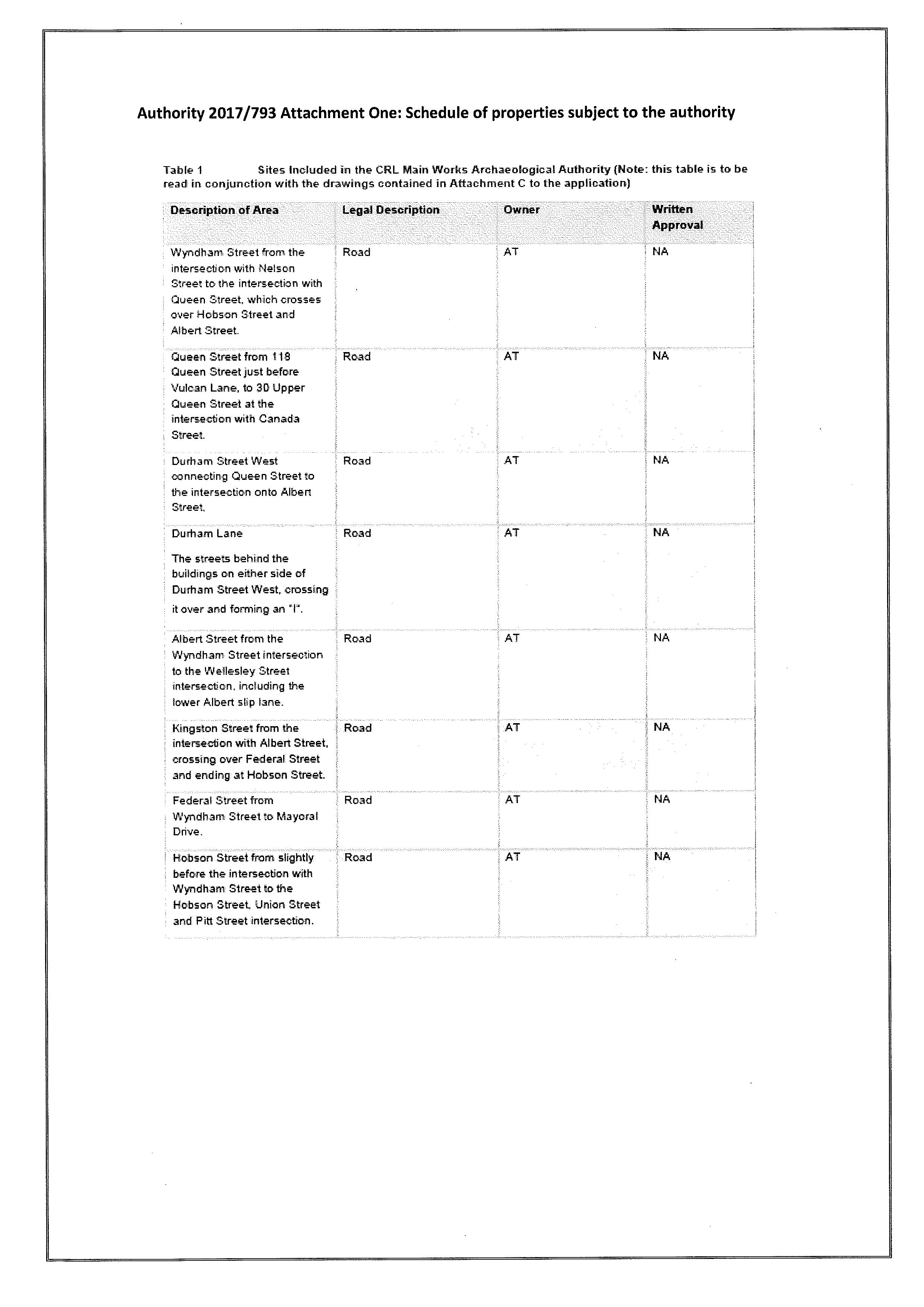
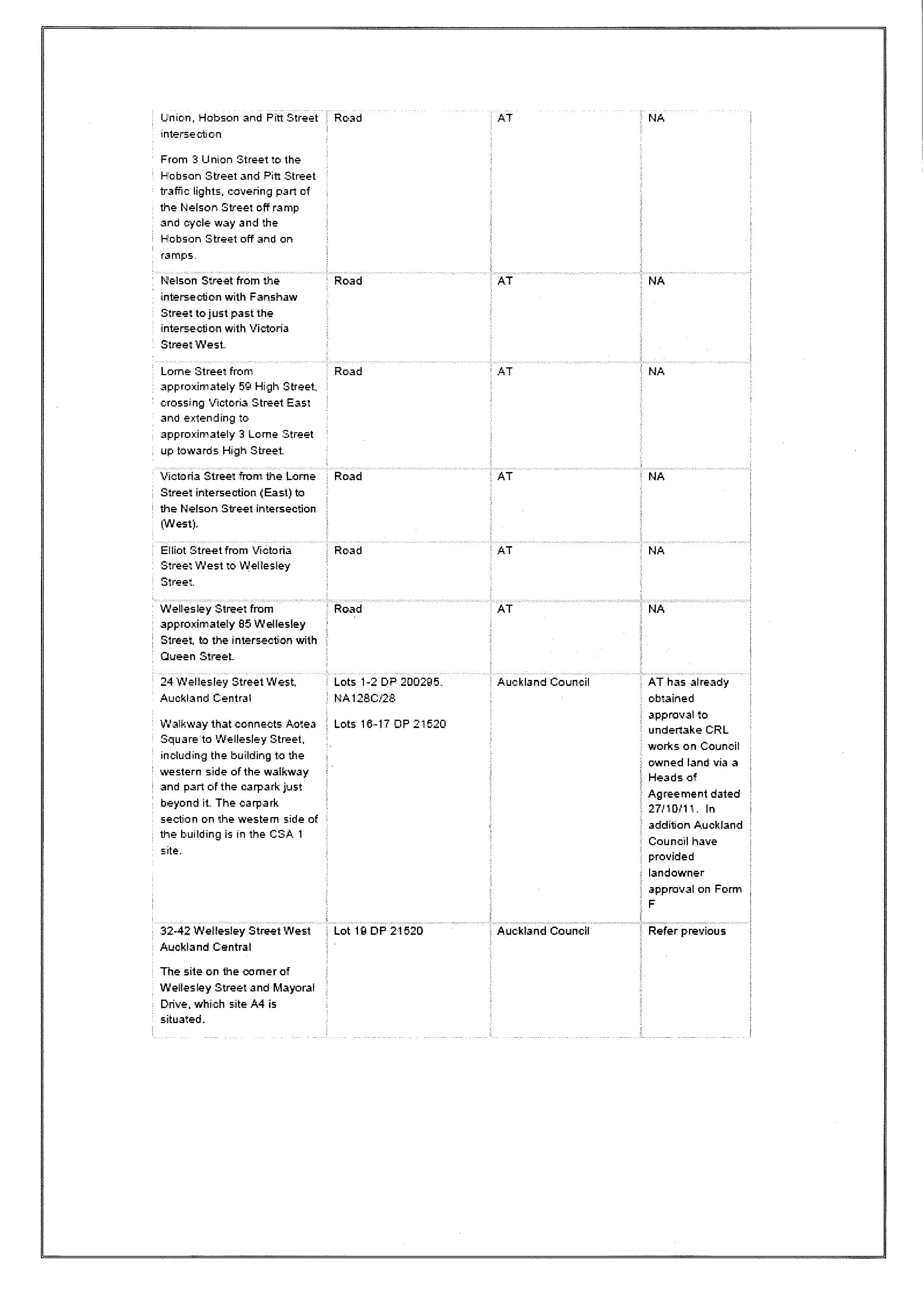


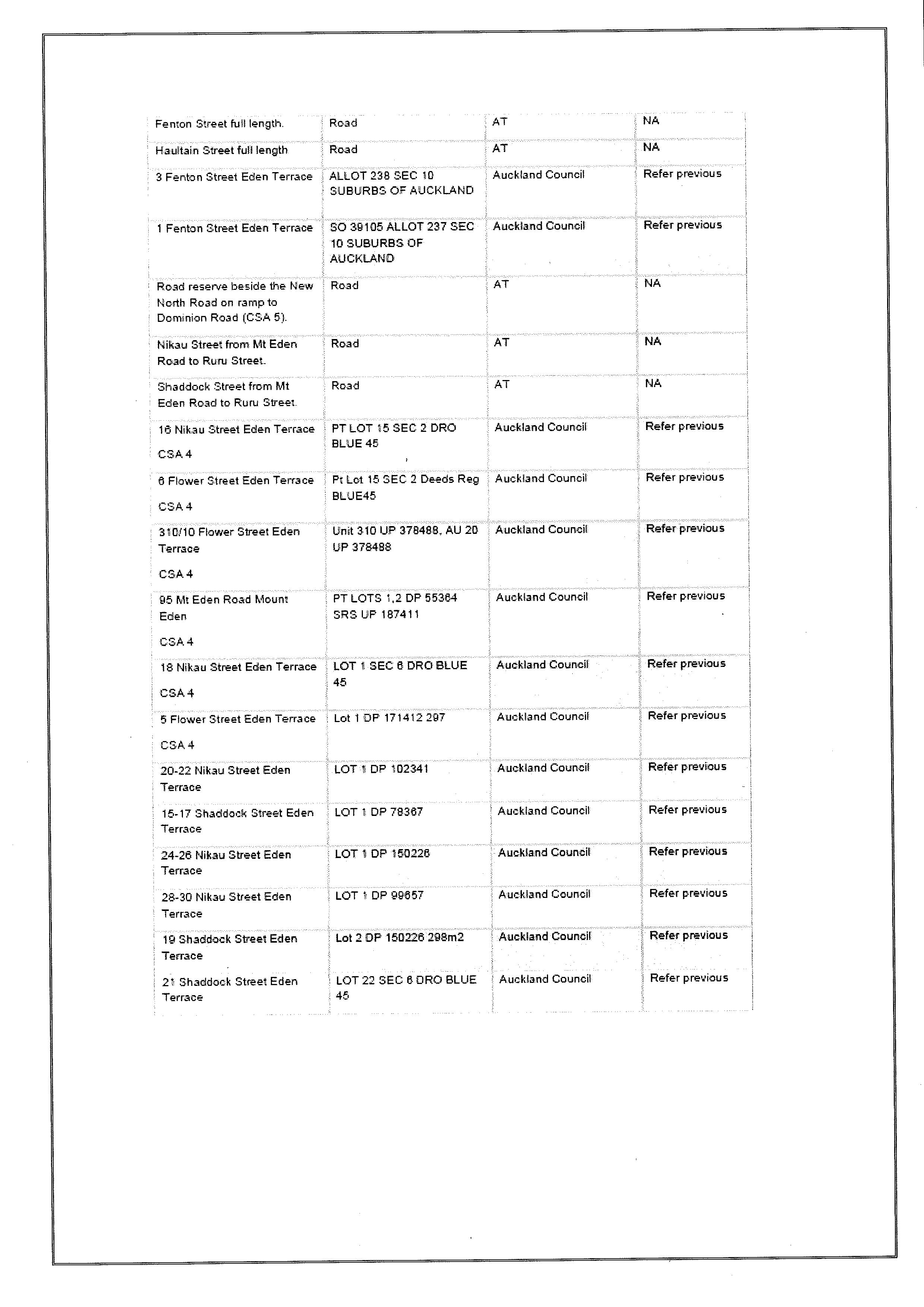
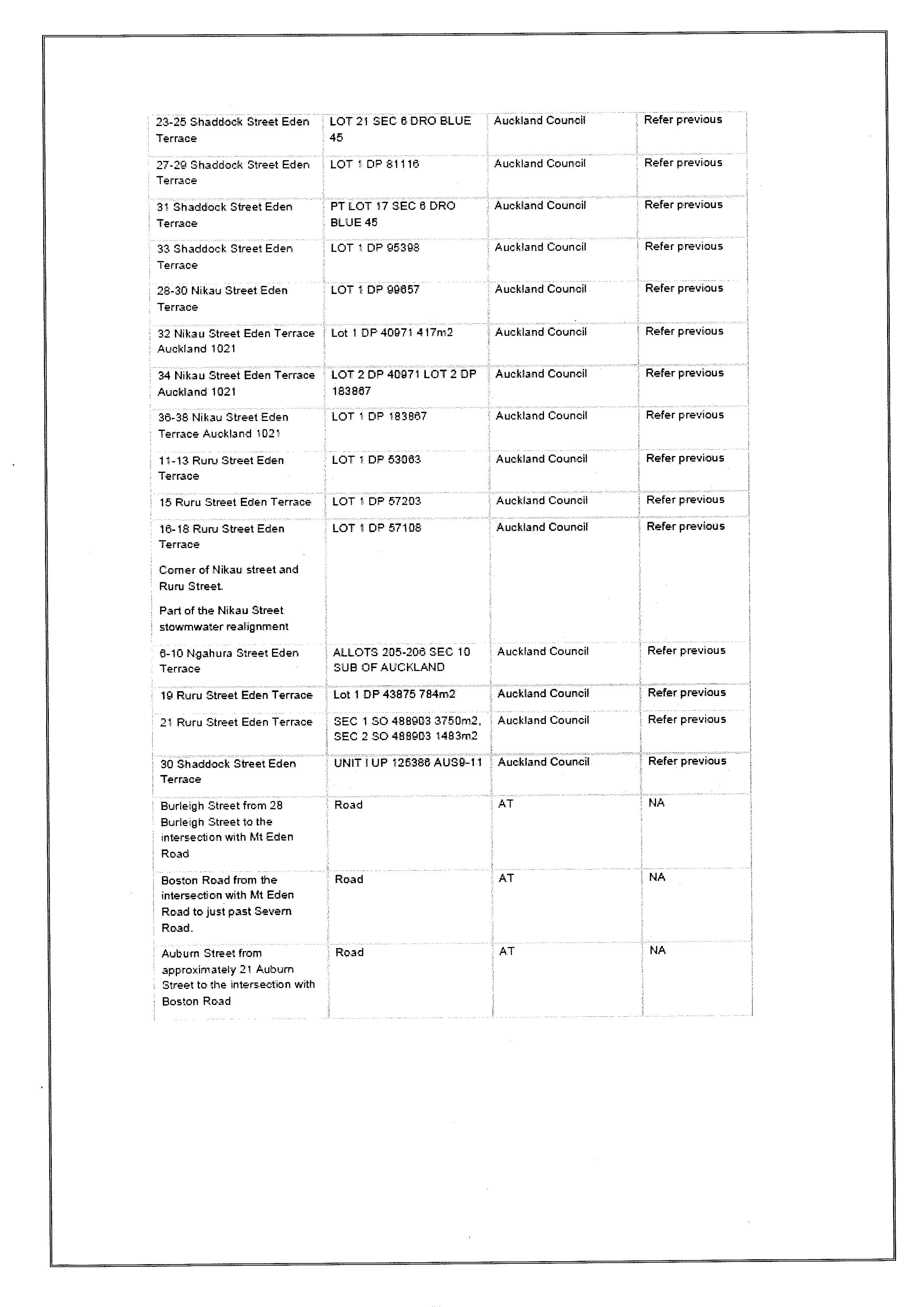

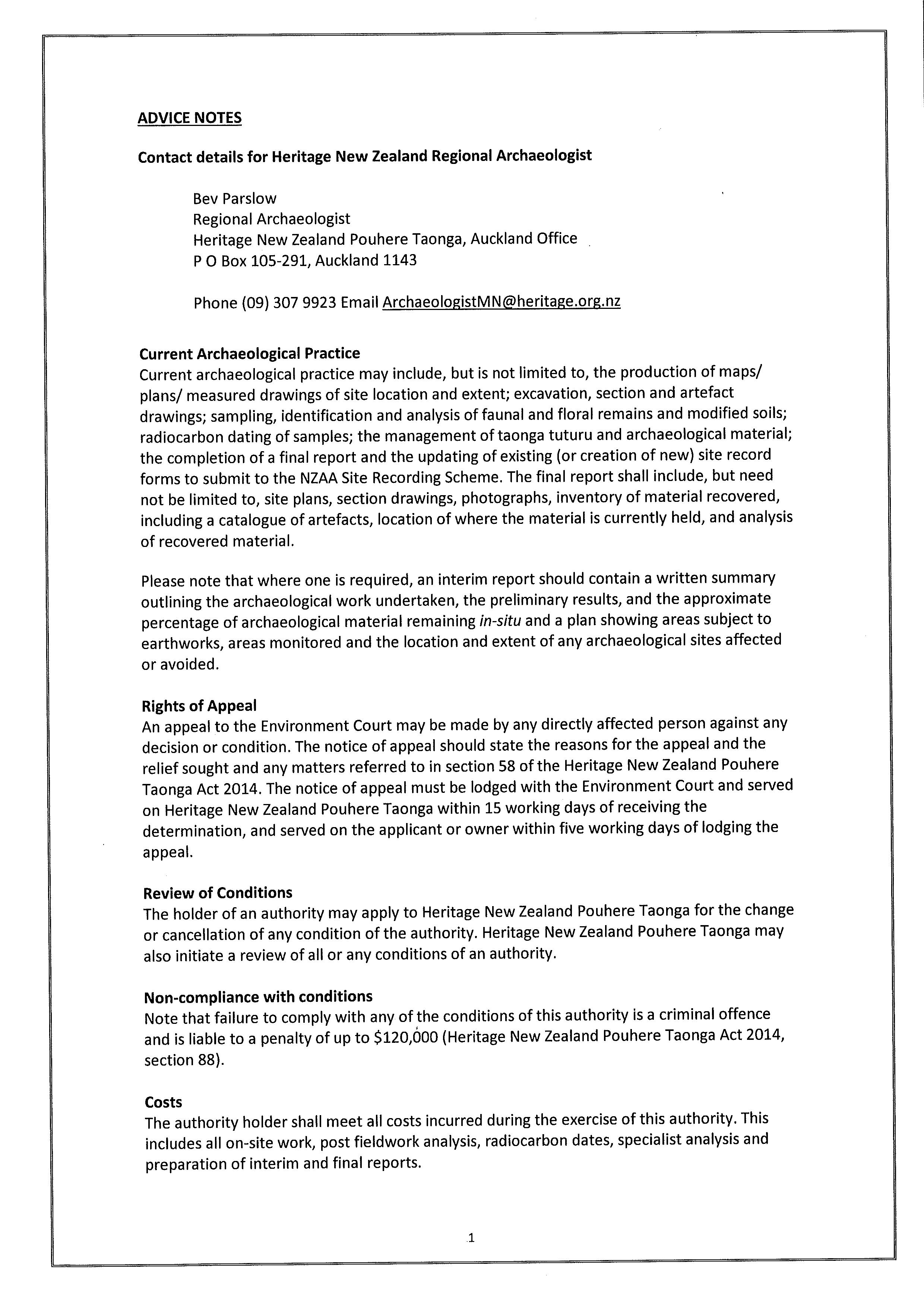

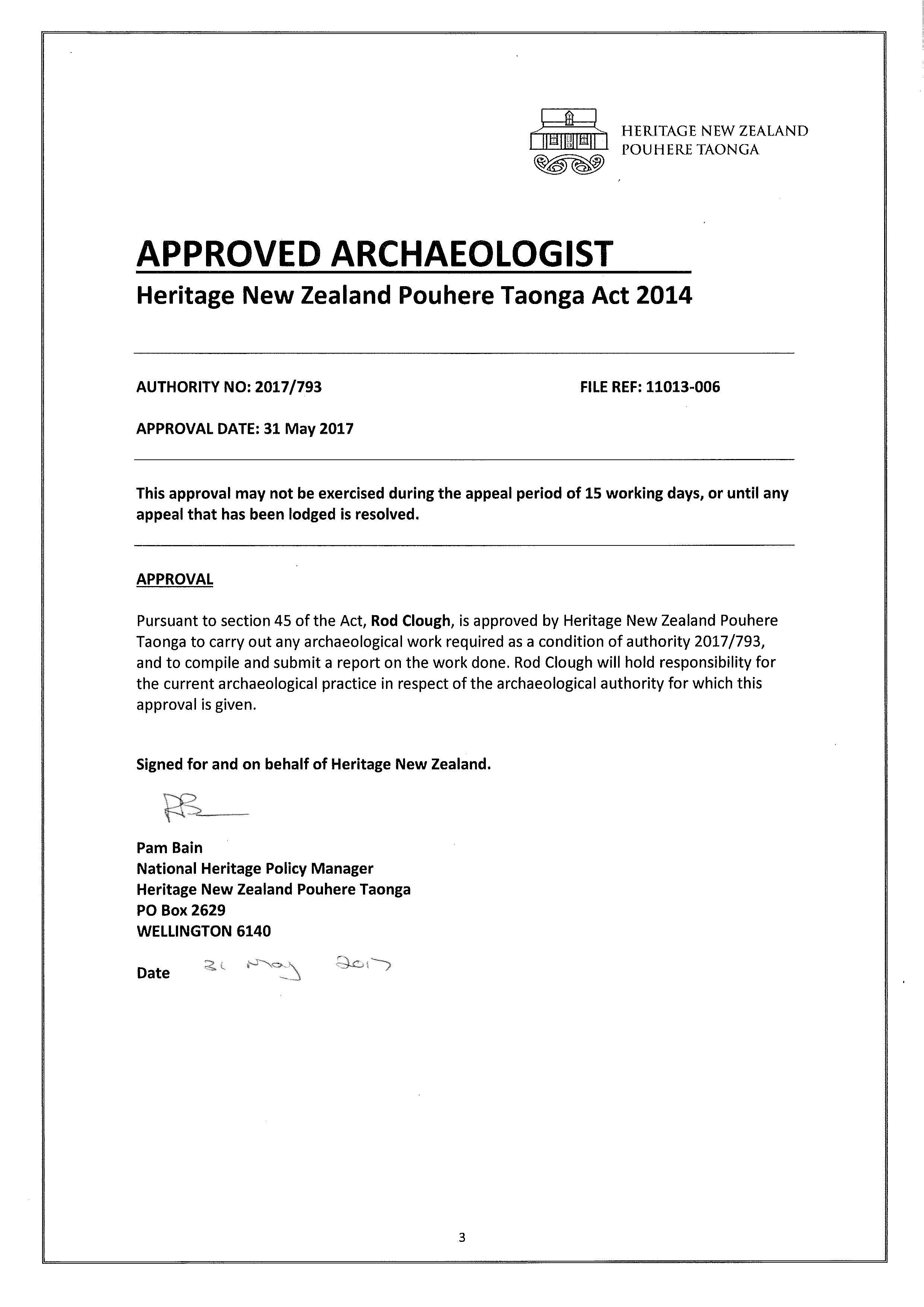

Appendix B: ISCA Requirements
Table B.1 identifies the ISCA Credit Requirements relevant to this HC DWP (Archaeology Section) and where they are addressed in the document.
Credit Requirement*
HER-1
Level 1
HER-1
Level 1
HER-2
Level 1
Measures to minimise the adverse impacts to heritage during construction have been identified and implemented.
Community heritage values have been identified through consultation and integrated into studies.
Monitoring of heritage is undertaken at appropriate intervals during construction and operation.
Relevant Section of HC DWP (Archaeology Section)
3, 4, 5 and 6
Other relevant Information / Comments
3, 4.1, 7, Appendix A and Appendix C Communication and Consultation Plan
4 and 6
Refer to the ISCA Rating Tool for full details of the requirements

Appendix C: Record of CLG, IPR and Auckland Council Comments
C1. CLG Comments
An Aotea CLG meeting was held on the 19 November 2019 to discuss the Aotea main works and for the CLG to provide comments / feedback on the CEMP and sub-plans, including this HC DWP (Archaeology Section). No comments were received.
C2. IPR Comments
Table 1-1
There is a broken MS Word link in Condition 42.3
Figure 6-1 The numbers showing where monitoring is required appear to be in the wrong place, or else the figure is very hard to read.
6.8 This section states that “timeframes need to be flexible” and section 6.6 states that “sufficient time and opportunity will be allowed for the recording and sampling of any archaeological features or deposits encountered.” However, Table 6-1 provides for Maximum Stand Down Periods, which is incompatible with flexible timeframes and sufficient time and opportunity. Row 1 says both “Maximum 2 days” and “Sufficient time.” If sufficient time turns out to be 3 or more days, this results in a lack of certainty for the project. Condition 3 of HNZPT authority 2017/793 states that “All archaeological evidence encountered during the exercise of this authority must be investigated, recorded and analysed in accordance with current archaeological practice.” Current archaeological practice is potentially time consuming and, while it is understood that the archaeologist will make every reasonable effort to clear the area as quickly as possible, this may not always be possible within the time frames outlined on Table 6.1. This table also states “Note that there may be special circumstances in which a longer period of stand down for investigation is deemed necessary by either HNZPT or Auckland Council.” This is potentially confusing.
I suggest that Table 6.1 be changed to Stand Down Triggers, the second column
Broken link has been removed.
The numbers have been brought closer to the monitoring areas and the figure improved
The contents of Table 6.1 are consistent with the Archaeological Management Plan approved under the Heritage NZ Authority (2017/793) and have been standard for previous Authorities and Heritage Management Plans approved by Council for other projects of this type, where extensive archaeological remains are not expected (i.e. in modified urban environments). We do not consider there is incompatibility between the fact that the contractor’s timeframes need to be flexible, and the maximum stand down periods given, as the necessary flexibility sits within those timeframes. Only limited remains are likely to be encountered during the main works, and 2 days has always proved sufficient for the archaeological team to investigate and record any feature encountered in such modified urban contexts, in accordance with current archaeological practice. No change has therefore been made to Row 1 of the table.
In Row 2 column 2 of the table relating to significant discoveries, the stand down period is:
“Up to three days for a response from HNZPT for pre-1900 remains, and in most circumstances up to three days for any detailed investigation required. Up to three days for a response from Auckland Council Cultural Heritage Implementation Team if significant post-

DWP Section Comment Response
deleted and the table re-formatted to include relevant HNZPT, Council and mana whenua response times. The Archaeological Management Plan should be also be updated under Condition 1 of authority 2017/793.
1900 historic heritage remains are found, and up to three days for any detailed investigation required.”
Note that the wording for pre-1900 remains states ‘in most circumstances up to three days’, while the Requirements column states that “there may be special circumstances where a longer period of stand down for investigation is deemed necessary by either Heritage NZ or Council”. We consider these statements to be consistent and compatible, with column 3 providing the explanation for the proviso in column 2.
However, we have amended the second paragraph of Row 2 column 2 to provide a similar proviso to post-1900 remains, as this was not consistent with the statement in column 2.
We do not consider that any changes need to be made to the Archaeological Management Plan issued under Authority 2017/793, as this table remains unchanged except where it relates to Auckland Council requirements.
C3. Auckland Council Comments
Myfanwy Eaves, Auckland Council Cultural Heritage Implementation Senior Specialist: Archaeology, has reviewed and provided comment on the draft HC DWP (Archaeology Section) as follows:
4.3 Can you please put my details in for page 12, 4.3 Key Personnel (table 4.1)? As I am dealing with matters it seems more logical to have that direct line
7 Section 7. First line says “Refer to Sections 7.2.8 of Project Communication…[CCP]” however in the CCP heritage is at 7.2.7. Just a correction needed.
Yes, Table 4.1 has been updated to include details as follows:
Myfanwy Eaves, 021 849 877 Myfanwy.Eaves@aucklandcouncil.co.nz
Section 7 has been updated accordingly.

Appendix D: Drawings


SHOULDBESTABILISEDINACCORDANCEWITHTHE EROSIONANDSEDIMENTCONTROLPLAN.


LinkAlliancehaspreparedthisdocumentforthesoleuseoftheclientandforaspecific purpose,eachasexpresslystatedinthedocument.Nootherthirdpartyshouldrelyonthis documentwithoutthewrittenconsentofLinkAlliance.LinkAllianceundertakesnoduty,nor acceptsanyresponsibility,toanythirdpartywhomayrelyuponorusethisdocument.
Thisdrawingisconfidentialandshallonlybeusedforthepurposeofthisproject.Thesigningofthistitleblockconfirmsthedesignanddraftingofthisprojecthavebeen preparedandcheckedinaccordancewiththeLinkAlliancequalityassurancesystemtoISO9001-2000.
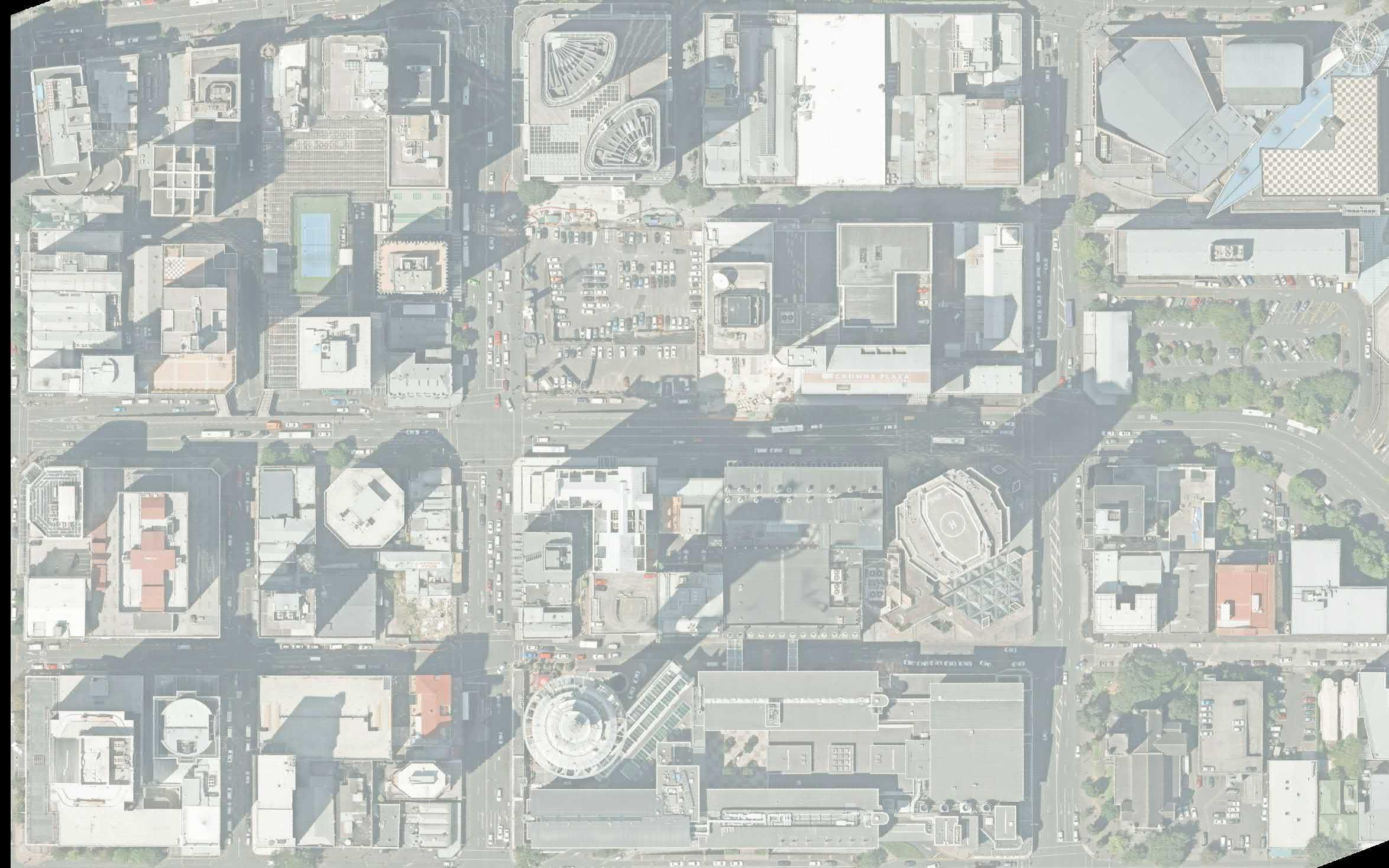





(NOTPARTOFAOTEA STATIONMAINWORKSCEMP)


STREETPLENUM

BLUESTONEWALL (NOTPARTOFAOTEA STATIONMAINWORKSCEMP)

FUTUREKINGSTON STREETPLENUM
PHASE3PHASE4/PHASE5 CONSTRUCTIONNORTHERNSECTION
FUTUREVICTORIASTREET WESTEASTERNENTRANCE
FUTUREWELLESLEY STREETWESTENTRANCE
PHASE4/PHASE5 CONSTRUCTION
PHASE4PHASE5CONSTRUCTION -SOUTHERNSECTION


FUTUREVICTORIASTREET WESTWESTERNENTRANCE
(NOTPARTOFAOTEA STATIONMAINWORKSCEMP)


STREETPLENUM
PHASE4PHASE5

